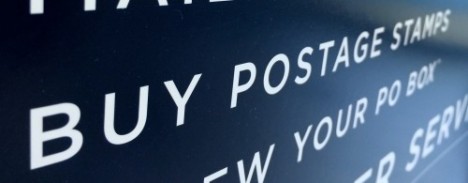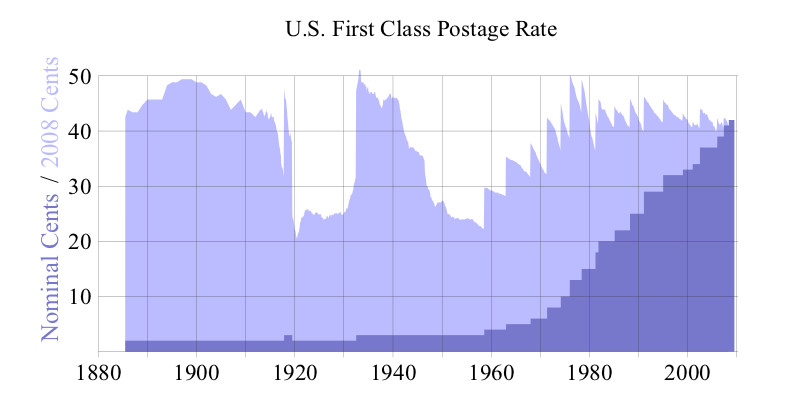While I’m not one to dole out financial advice (and neither is this blog), there’s one investment you should probably make in the next 7 days unless you’d like to address all your bills, thank you notes and wedding invitations to Ripoffsville this year. The price of a stamp is about to skyrocket on Sunday, January 26th and your best way around it is to invest in some Forever stamps before the postage increase.
What do I mean by “skyrocket”? Ultimately, the price of a stamp is only going up by 3-cents… from 46 cents to 49 cents. Doesn’t seem like a big deal, right? Well, percentage-wise, this is a 7% stamp price increase! By buying Forever stamps, you’d save 6 percent! …You still don’t seem persuaded. I get it… It’s barely even as good as a Bed, Bath and Beyond coupon.

Let’s look at it this way: historically, the price of a stamp has barely even kept pace with inflation — so, in a way, first class letter postage has actually gotten cheaper and cheaper each year. For instance, a 32 cent stamp in 1995, adjusted for inflation, would have been worth worth 49 cents in 2013. By comparison, this makes our actual 2013 rate, 46 cents, look like a bargain. And this historical pattern of inexpensive postage has persisted for quite a long time. In fact, something called the Postal Accountability and Enhancement Act of 2006 was supposed to force the USPS to raise stamp prices no faster than the rate of inflation. Forever stamps should never be a good deal, because legally speaking, stamp price increases should never exceed inflation.
Counter to all this, the USPS filed a request for an “exigent” price increase (by complaining about the Great Recession) and it was approved by the Postal Regulatory Commission. So, now the price of a stamp is actually bumping up to a full 49 cents — an increase of 6.5% — clearly higher than the rate of inflation. Inflation over the course of 2014 (which we can assume will be at least 1%) will remove the purchasing power of your postage budget as the year wears on. These economics will finally make this stamp price hike a bad one for consumers.
TL;DR: Buy some Forever stamps this weekend and thank me at the end of the year when you’re sending Christmas cards at a 6% discount. If not for the sake of beating the system, saving one more trip to post office hell will easily pay for many more stamps.
